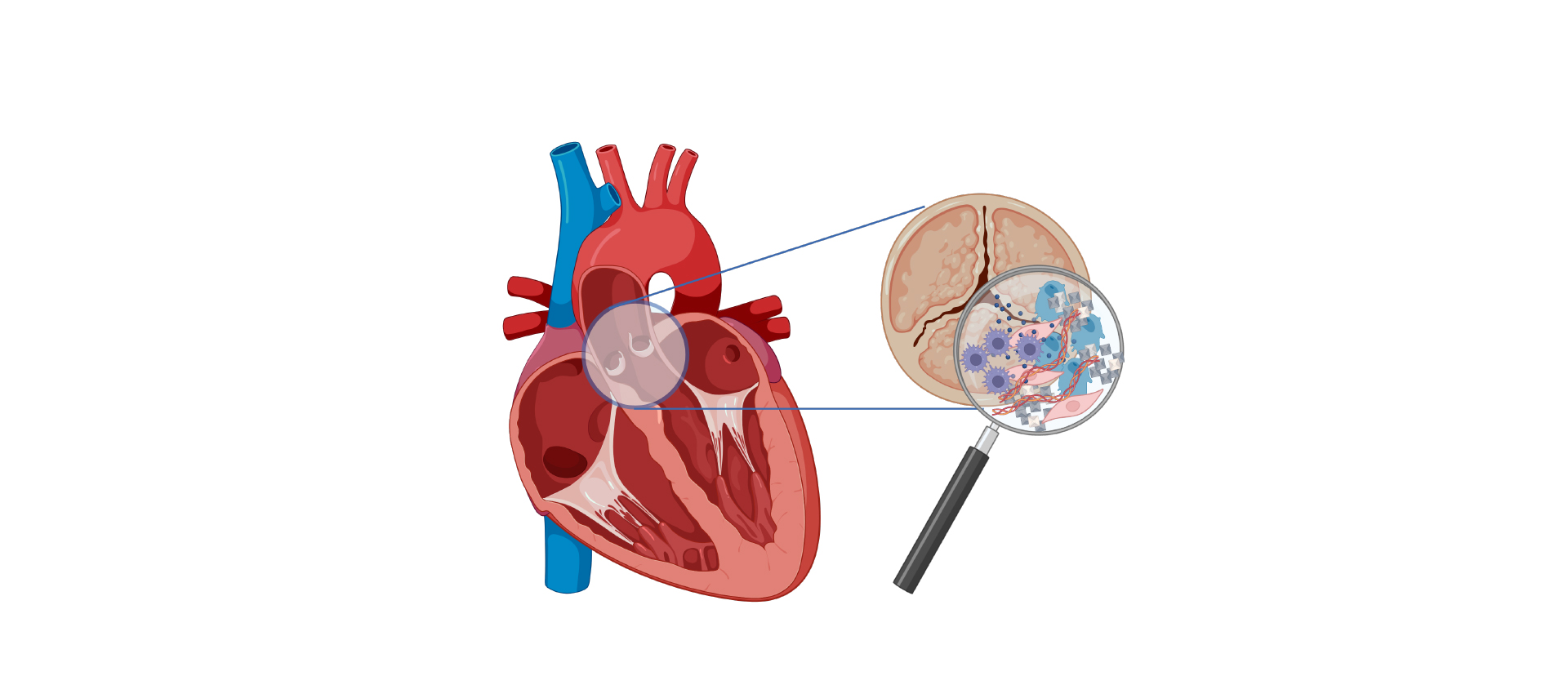
Galectin-1 prevents pathological mechanisms involved in aortic stenosis
- Researchers from Navarrabiomed, CIBERCV in Spain and CONICET in Argentina have demonstrated that galectin-1 is a therapeutic target against aortic stenosis.
- A new study, published in Faseb Journal, and with the participation of IIS-FJD-UAM researchers, suggests the regulation of galectin-1 expression by oestrogens as a possible differential mechanism in the development of valvular aortic stenosis between men and women.
Cardiovascular diseases are the leading cause of death and disability worldwide and represent increasing health expenditure due to the ageing of the population. Specifically, calcific aortic stenosis (CAS) is one of the most common forms of heart valve disease. Broadly speaking, CAS entails calcification and degeneration of the aortic valve, leading to the replacement of valve tissue with bone tissue and its narrowing. Opening of the aortic valve, and therefore the distribution of blood to the rest of the body, is compromised.
There is currently no effective pharmacological treatment that alters the evolution of the disease, and aortic valve replacement is the only way to improve symptoms and long-term survival. The prevalence of CAS is estimated at around 3.4% in patients over 75 years of age, and increases notably with age. It is estimated that there are around 145,469 people with CAS in Spain, taking into account only the group of those over 75 years of age. As such, the identification of new mechanisms involved in this disease, as well as the search for new therapies to prevent mortality associated with these diseases, is a key research challenge.
In this field, a new study carried out by researchers from Navarrabiomed and the CIBER of Cardiovascular Diseases (CIBERCV) at the Health Research Institute of the Fundación Jiménez Díaz-Universidad Autonoma de Madrid (IIS-FJD-UAM), together with the Institute of Biology and Experimental Medicine (IBYME) of the National Council for Scientific and Technical Research (CONICET) in Buenos Aires, and published in Faseb Journal, has demonstrated the presence of galectin-1 in stenotic aortic valves, with the levels of this galectin being higher in the valves of men than in women. It should be noted that these differences suggest the need to develop sex-specific treatments, since the evolution, presentation and therapeutic response of the disease differs between sexes. All of this supports investment in research in order to improve current therapies.
Galectin-1 levels are regulated by oestrogen in interstitial valve cells
Previous clinical studies showed that the valves of men and women are different, namely that women have a lower degree of calcification and greater valvular fibrosis than men. In this sense, “elevated levels of galectin-1 may be related to the greater number of valvular interstitial cells (VICs) with an osteoblastic phenotype in the aortic valves of men,” comments Eva Jover, the lead author of the study.
With the intention of understanding the possible mechanisms underlying the findings in valve tissues from patients, the authors proposed to carry out studies with VICs in culture in the presence of oestrogen, the female sex hormone. “Interestingly, we were able to verify that oestrogens were only able to regulate the expression and secretion of galectin-1 in VICs from women, while they had no effect in those from men,” says Natalia López de Andrés.
Treatment with galectin-1 prevents the development of valvular calcification
Previous studies by the CONICET and CIBER groups had demonstrated a cardioprotective and anti-inflammatory effect in experimental models of myocardial infarction and atherosclerosis. However, the effect of galectin-1 on the mechanisms involved in aortic stenosis was unknown.
The study demonstrated that “treatment with galectin-1 was able to prevent inflammatory mediators and VIC calcification, which raises the possibility of evaluating the potential of this galectin as a possible therapeutic target in aortic stenosis,” says José Luis Martín Ventura.
However, “from a clinical point of view, further research is required to translate these findings to the patient, as well as the contribution of galectin-1 to the mechanisms involved in aortic stenosis,” concludes Gabriel Rabinovich.
Reference article:
Sex-dependent expression of galectin-1, a cardioprotective β-galactoside-binding lectin, in human calcific aortic stenosis.
Jover E, Martín-Núñez E, Garaikoetxea M, Matilla L, Blanco-Colio LM, Pérez-Sáez JM, Navarro A, Fernández-Celis A, Gainza A, Álvarez V, Sádaba R, Tamayo I, Rabinovich GA, Martín-Ventura JL, López-Andrés N. FASEB J. 2024 Feb 15;38(3):e23447. doi: 10.1096/fj.202301832RR
